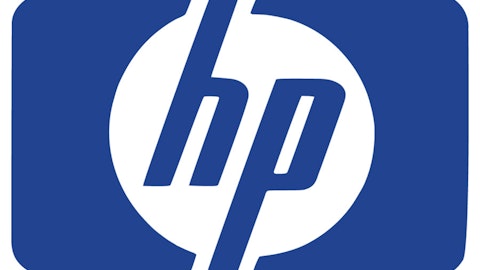Many steps ahead
The future of mobile computing is simple in concept but extremely challenging in practice. It takes shrinking and integrating nearly every element necessary for the computing experience and placing them all onto a single chip. The end result is that fewer components will be needed and, therefore, huge leaps in power efficiency can be achieved. In the context of integration, Qualcomm remains well ahead of the competition, and is the only major player that has successfully implemented an LTE modem directly onto a Snapdragon node. Not even Samsung, which operates its own foundry, has released an integrated an Exynos processor with an integrated LTE modem. If this is any indication, it goes to show you how difficult the process of integration is proving.
As far as discrete modems are concerned, consider what Qualcomm COO Steven Mollenkopf said during the company’s most recent fiscal fourth quarter conference call:
Our industry-leading modem technology continues to be a tremendous differentiator for us. As modem complexity continues to increase with multimode and multiband requirements, we are well-positioned with a single solution that offers a true global modem, supporting all cellular modes including CDMA, WCDMA, TD-SCDMA and both LTE TDD and LTE FDD, as well as the approximately 40 related RF bands.
Broadcom’s announced LTE modem does not support all of the cellular modes mentioned. Worldwide smartphone manufacturers looking to streamline production are going to go with the solution that’s the most widely usable around the world. Qualcomm may still remain the leader of the pact in this regard.
Rest assured
Research firm Strategy Analytics estimatesLTE smartphone shipments will grow from 90.9 million units in 2012 to 275 million units this year. Over 200% year-over-year growth is likely to keep the competition at bay and allow for new players to enter the market without too much disruption. Couple this with the fact that the smartphone industry will continue to transition into fully integrated chip solutions, which could mitigate some of the risk associated with increased LTE competition. Not to mention, Qualcomm will still receive royalties for LTE modems from other companies, which was the majority driver of its profits last quarter. Considering all these factors, I think these headline threats should ultimately be taken as an opportunity to buy Qualcomm, which seems to offer the total package for chip investors.
The article 2 Threats Qualcomm Investors Need to Watch originally appeared on Fool.com and is written by Steve Heller.
Fool contributor Steve Heller owns shares of Apple and Intel. The Motley Fool recommends Apple, Intel, and NVIDIA, and owns shares of Apple, Intel, and Qualcomm.
Copyright © 1995 – 2013 The Motley Fool, LLC. All rights reserved. The Motley Fool has a disclosure policy.





